#alberta native animals
Explore tagged Tumblr posts
Text
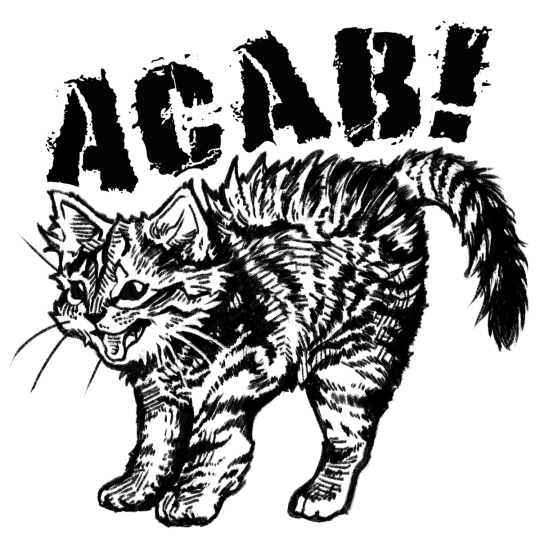

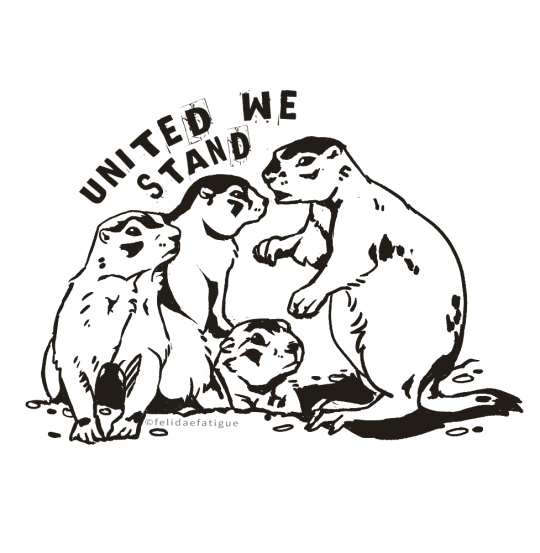
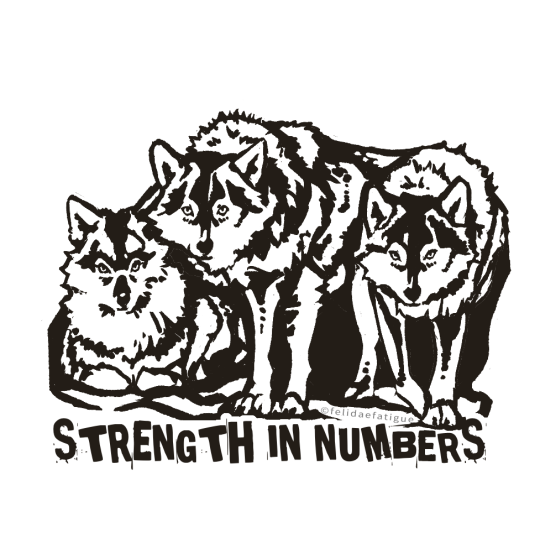
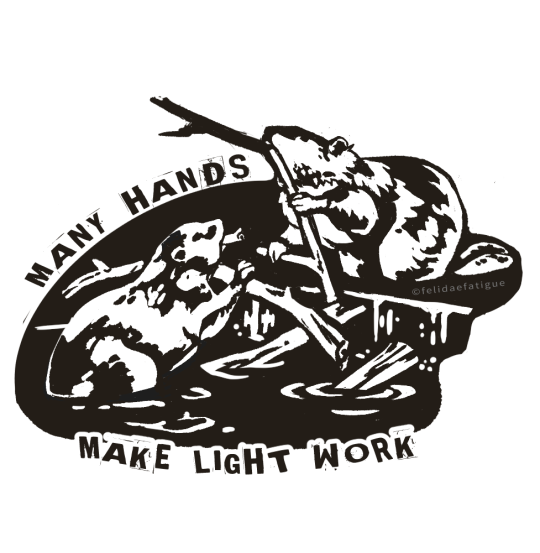
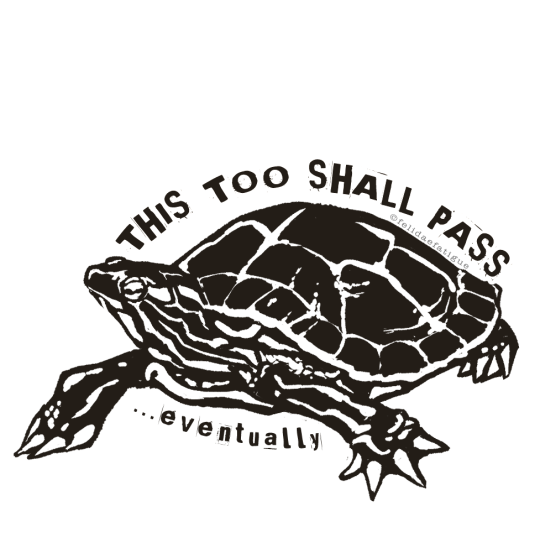

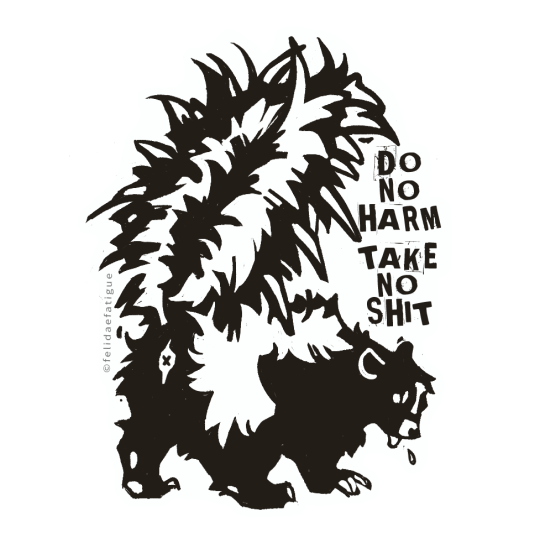
Got some punk albertan critters sticker designs done! all native species except the rat (iykyk) and my cat.... Might have more. If u have the capability or know a printer who does single/small jobs feel free to use for personal use (like dont get 100 made but a couple for u and a friend w.e.). Not to sell. I might make em into patches eventually myself as well.
61 notes
·
View notes
Text
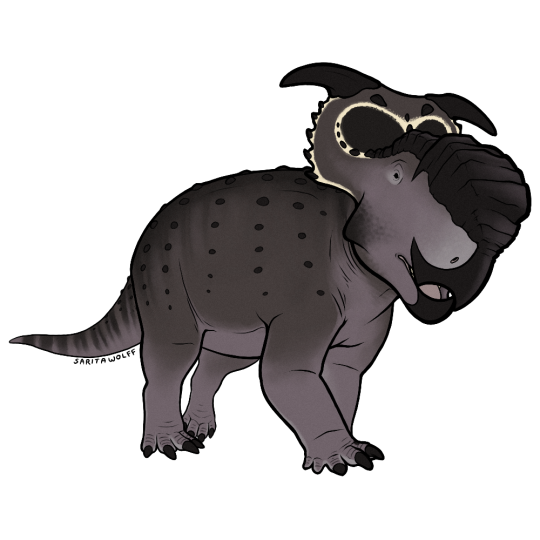
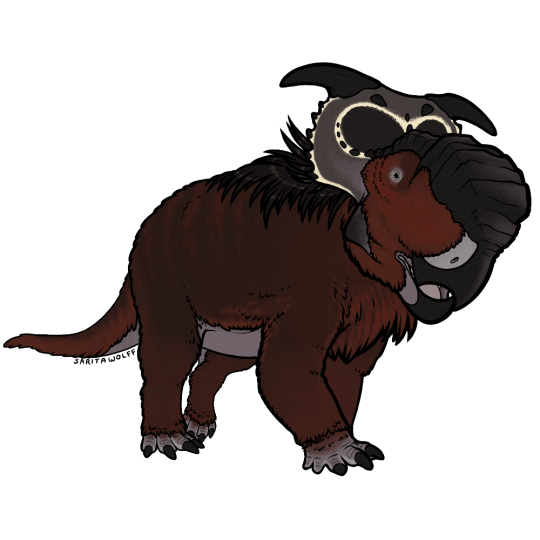
A Patreon request for rome.and.stuff (Instagram) - Pachyrhinosaurus perotorum… that I went a bit overboard with lol. I’ve been waiting for an excuse to draw my favorite ceratopsian, and to digitally adapt my old Pachy marker drawing design.
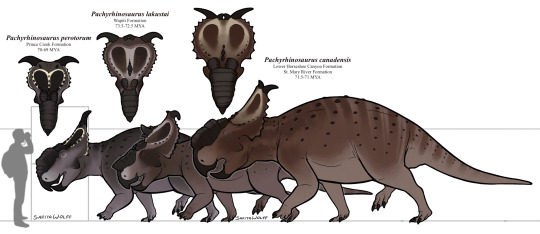
So! Pachyrhinosaurus! As seen above, there were three known species of Pachyrhinosaurus, living in different locations and eras in Late Cretaceous North America.
The oldest, P. lakustai, was native to the Wapiti Formation of Alberta and British Columbia, Canada. It’s known for the extra spikes it has at the center of its frill.
The slightly younger P. canadensis was native to the lower Horseshoe Canyon Formation and the St. Mary River Formation of Alberta and northwestern Montana. It was the largest of the three.
The youngest, P. perotorum, was native to the Prince Creek Formation of Alaska. As this ceratopsid seemingly stayed put during the long, dark, cold Alaskan Winters, it likely had adaptations for keeping warm.
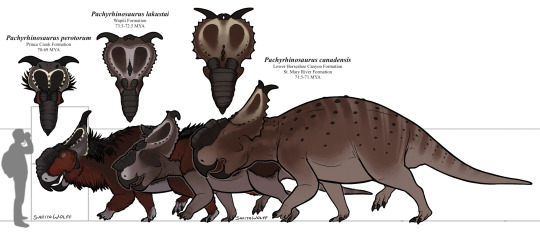
The depiction of a “woolly” Pachyrhinosaurus was first popularized by Mark Witton as a speculative work, but the trope has prevailed. While many paleontologists find a heavy feather covering on a centrosaurine to be highly unlikely, and maintain that the animal’s size and homeothermy would have kept it warm enough, we still have no skin impressions to suggest that P. perotorum was fully scaly. So a feather coating is not completely out of the question (though it is unlikely). Still, I love the look of a woolly Pachyrhinosaurus and how it challenges our previous conceptions of non-avian dinosaurs. Stranger things exist in nature. I had to include a “woolly” option, especially since I already use the guy as my avatar on my paleo Instagram account, SaritaPaleo.
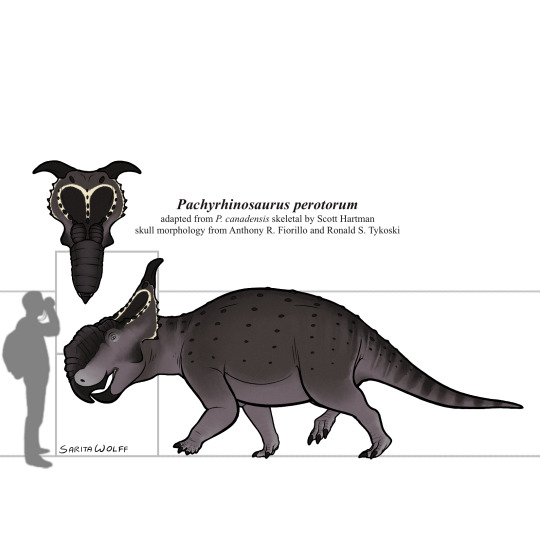
Pachyrhinosaurus was particularly unique in that it seemingly traded off something that had previously worked for other ceratopsians, horns, for a large nasal boss instead. For Pachyrhinosaurus, a battering ram worked better than a sword.
It was herbivorous, using its strong cheek teeth to chew tough, fibrous plants. Perhaps during the dark and cold Winters, P. perotorum would have also dug for roots or even scavenged carcasses. At any rate, from observations of their unusually conspicuous growth banding, it appears growth for P. perotorum would have been stunted during the harsh Winter, but was extremely rapid in the warmer months, an adaptation for the Alaskan climate.
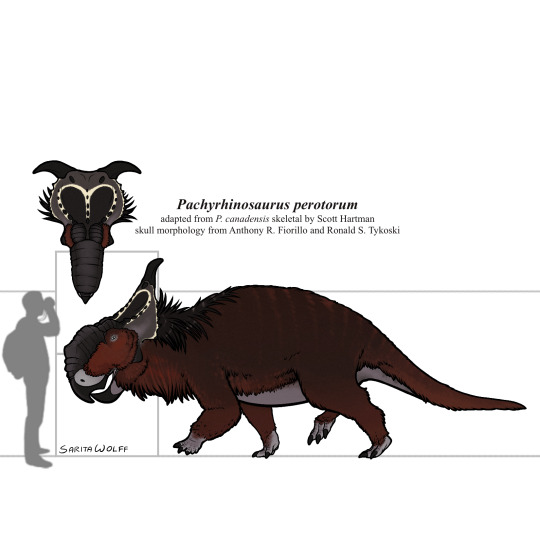
The tundra of the Prince Creek Formation housed a surprising amount of diversity. Pachyrhinosaurus perotorum would have lived alongside smaller ceratopsians like Leptoceratopsids, as well as other ornithischians like the pachycephalosaurine Alaskacephale and the hadrosaurid Edmontosaurus. Theropods such as Dromaeosaurus and Saurornitholestes, as well as a yet unidentified giant Troodontid, lived here as well. P. perotorum’s main predator would have been the tyrannosaur Nanuqsaurus. Small mammals were also somewhat common here, such as Cimolodon, Gypsonictops, Sikuomys, Unnuakomys, and an indeterminate marsupial.
(Btw, the request tier for Patreon starts at only $5 a month. 😉 Link is pinned at the top of my blog.)
#my art#SaritaDrawsPalaeo#Pachyrhinosaurus#Pachyrhinosaurus perotorum#Pachyrhinosaurus lakustai#Pachyrhinosaurus canadensis#Centrosaurines#ceratopsians#ceratopsids#ornithischians#dinosaurs#archosaurs#archosauromorphs#reptiles#Prince Creek Formation#Wapiti Formation#Horseshoe Canyon Formation#St. Mary River Formation#Late Cretaceous#Canada#United States of America
96 notes
·
View notes
Note
Thhsn h e l l o
I was wondering what your oddly specific headcannons on any states are or I was wondering if you had any
Yeahh, most of them are gonna be about Alaska and his cities tho (for obvious reasons)
Alaska works in the Arctic Council, as he is the only state to be a part of it anyways. I have more things to say about this but I wont here, but it is a very big topic honestly
Fairbanks has a fear of water he can't see the bottom of. They can swim, but they've been afraid of it since the Fairbanks Flood of 1967
Alaska BIG fan of many science branches... although the Arctic Council requires him to know Earth Sciences, his favorites are probably astronomy and some zoologies (which I've elaborated on the astronomy one particularly in a post before)
Maine knows his invasive and native species
Alaska's biggest opposition is PETA. They fight every year cuz of the Iditarod. They took his moose dropping festival and they will not take any more from him
I've seen this headcanon around and I completely agree. Alaska IS a very much a blankets kinda guy, it's just so true
Montana (And Alberta and if u consider Saskatchewan to be family of Alberta then them, too) has Blood A type blood (non specific on positive or negative)
Hawai'i has a blood type of A (non specific on positive or negative)
Oak has a blood type of O (not because of O in Oklahoma, there's genuine research behind this reason) and New Mexico also has blood type O (non specific on positive or negative)
Alaska has either a blood type of B or AB (non specific on positive or negative)
Vermont is allergic to dust, North Dakota is allergic to pollen, tho other states might be since pollen is a comment allergy
Florida's favorite iditarod team (from this year) was Anna Berington's, since her team of doggies were named off of a "troublemaker" theme. The Dog's names are Ruckus, Rampage, Havoc, Chaos, and Mayhem
Maine has the fastest reflexes/reaction time, cuz yknow... he's basically a cat. Cats have one of the fastest reflexes and reaction times in the whole animal kingdom
Idk this is all I can think of so far, I might update it if I think about it more. It's hard for me to consider what is "oddly specific" but Im sure blood types is certainly oddly specific for me to have thought about before
#wttt#welcome to the table#welcome to the statehouse#wttsh#ben brainard#wttt alaska#wttsh headcanons#wttt headcanons#wttt maine#wttt florida#wttt hawaii#wttt hc#wttt vermont#wttt montana#wttt oklahoma#wttt new mexico
36 notes
·
View notes
Text

Good story from Yale Environment 360, without a paywall (I think), about beavers, public land, wildfires, endangered species, the largest beaver dam in the world, the degradation of that land and the large pond behind the dam due to the tar sands mining activity in the vicinity. In other words, a microcosm of all the bad stuff and good stuff intersecting in one place in Canada. Excerpt from this story:
Wood Buffalo National Park, the largest national park in Canada, covers an area the size of Switzerland and stretches from Northern Alberta into the Northwest Territories. Only one road enters it from Alberta, and one from the NWT. If not for people observing it from airplanes and helicopters, and satellites photographing it, little would be known about big parts of it. The park is a variety of landscapes — boreal swamps, fens, bogs, black spruce forests, salt flats, gypsum karst, permafrost islands, and prairies that extend the continent’s central plains to their northern limit. The wood buffalo in the park’s name are bison related to the Great Plains bison. In this remoteness, the buffalo descend from the original population, and the wolves that prey on them are also the wild originals. Millions of birds summer and breed here. The park holds one of the last remaining breeding grounds of the whooping crane.
Other superlatives and near-superlatives: the delta in the park’s southeast where the Peace River and the Athabasca River come together is one of the largest freshwater deltas in the world; last summer, some of Canada’s largest forest fires burned in the park and around it; and — just inside the park’s southern border — is the largest beaver dam in the world.
The dam is about a half-mile long and in the shape of an arc made of connected arcs, like a recurve bow. The media has known about it for 16 years, and in that time no bigger beaver dam has come to light, so it’s still known as the biggest, and scientists believe it almost certainly is. Animal technology created it, but human technology revealed it.
Many of the beavers that have reestablished themselves globally are descended from beavers that were planted by wildlife biologists. The thriving beaver population of Tierra del Fuego (another place Thie has studied) is descended from beavers brought to Argentina from Canada’s Saskatchewan River, who are themselves scions of beavers transplanted from upstate New York. No reintroduction of beavers was done in Wood Buffalo Park. Thie believes that the beavers who built the dam are of original stock. Like the wood buffalo and the wolves, they were too remote to be wiped out.
The park is suffering the worst drought in its history. Flows are down by half in many places, owing to climate change, water diversion, poor seasonal snowpack, and dams on the Peace River, upstream in British Columbia. A danger that seems inescapable comes from the oil sands that are being mined for crude-oil-containing bitumen, and from tailing ponds that hold trillions of liters of mine-contaminated water. The ponds are near the banks of the Athabasca River, just upstream from the park boundary. They are fatal to birds that land on them. Given the direction that water flows, conservationists and native people fear the tailings will pollute the park eventually. Toxic chemicals have already been found in McClelland Lake, just southeast of the park. Locals stopped taking their drinking water from the lake years ago.
Gillian Chow-Fraser, the boreal program manager for the Northern Alberta chapter of the Canadian Parks and Wilderness Society, in Edmonton, travels in the park often by helicopter, canoe, and foot. She has described the park’s environment as “super degraded.” When I spoke with her by phone not long ago, she talked about a recent tailing basin leak that was not reported to the First Nations downstream of it for nine months. In places that used to flood regularly but now don’t, the land is drying out and vegetation disappearing. Though she crisscrosses the park, she has never seen the world’s largest beaver dam, but she’s grateful that it’s there and bringing the park attention.
35 notes
·
View notes
Text
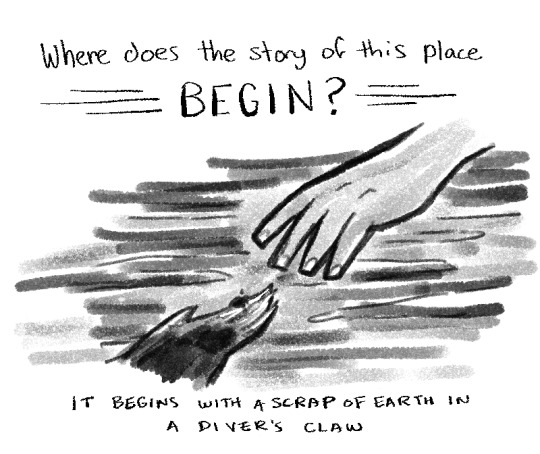

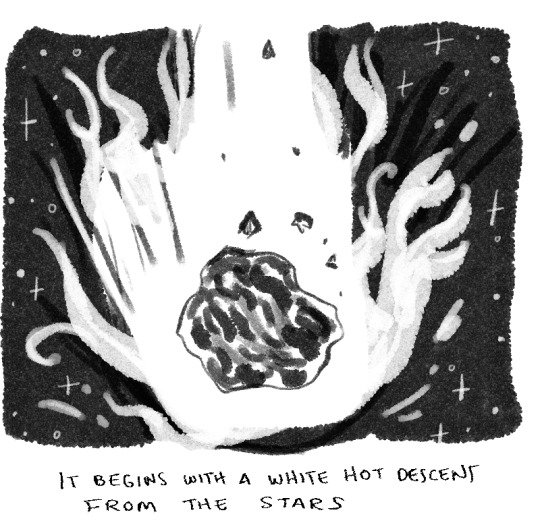
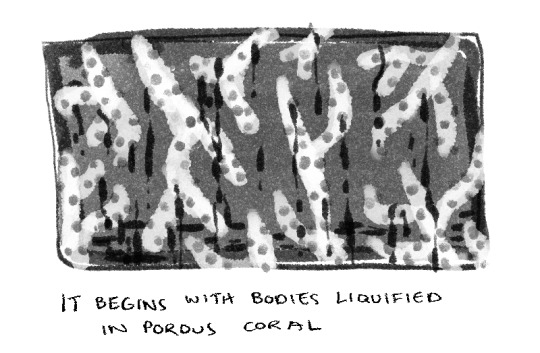
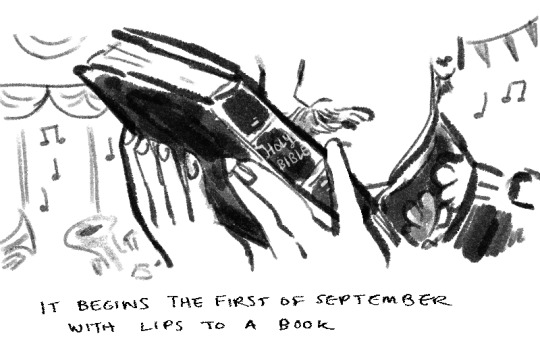


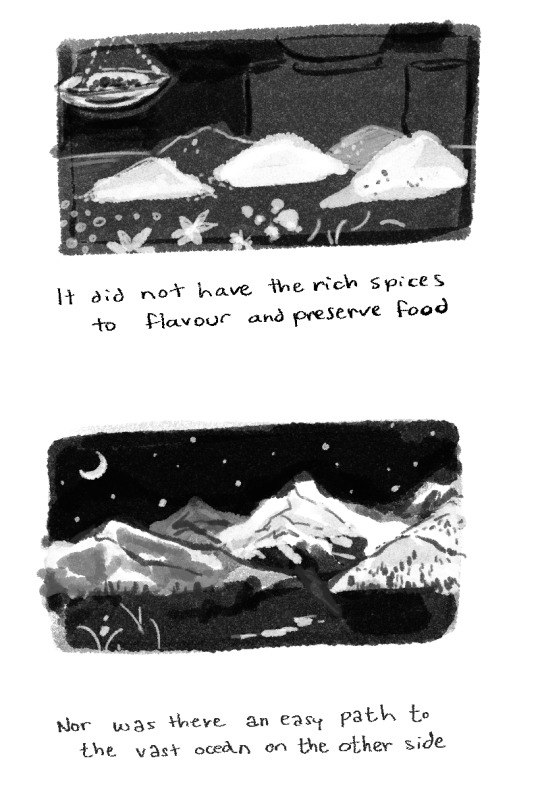
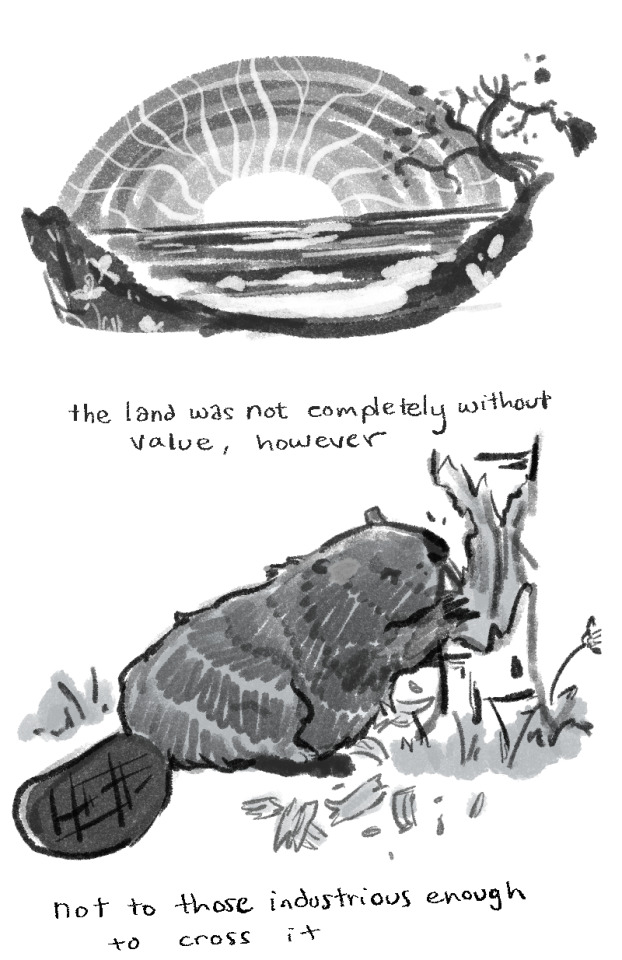

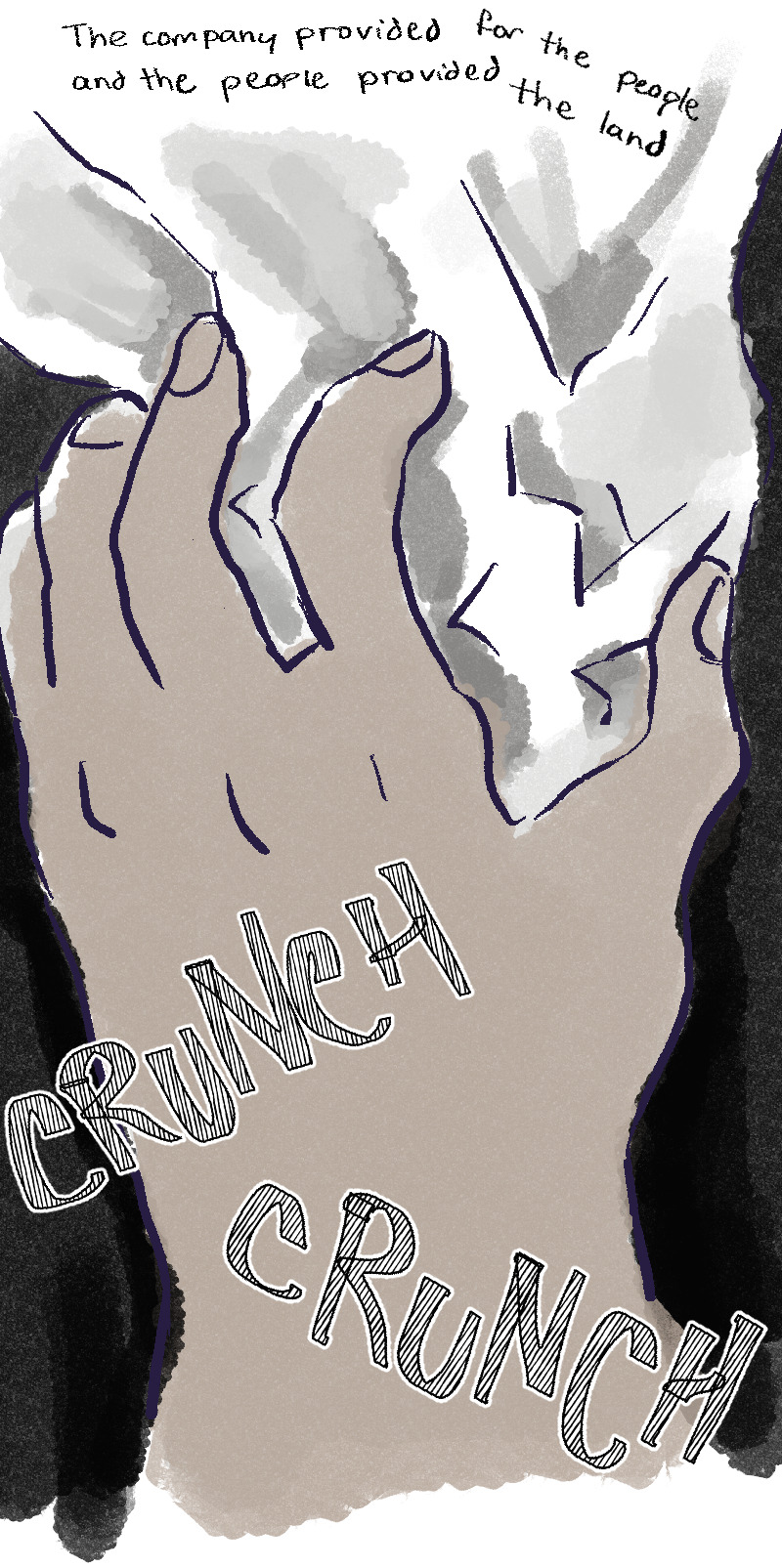


Hi and welcome to this thing that's sort of a prequel to the timeline I'm working on. The working title is Alberta Story, but as you can see I kind of changed directions midway through as I thought about it more, I figured if I was getting frustrated then surely Ed was also getting frustrated with it so I turned it over to him to express that, haha. I wrote the first half of this last fall and stewed on it for about a year and decided, screw it, I don't know where I'm going with this but I will slap on a few more panels and figure it out as I go.
This might be the closest thing to a reboot of the BoAB main storyline for a while. I wanted to do something that gave a cursory outline of Canadian / Albertan history for people who are new to it, but of course it runs the risk of repeating every narrative Canada / Alberta have about themselves and that's quite frustrating, to be honest! Particularly when you are trying to write characters who lived through a great chunk of it.
I was trying to think about where to "start" the story of Alberta, particularly after reading Mavericks: An Incorrigible History of Alberta. A lot of the tongue in cheek ahistorical assigning of Albertan-ness to even protozoic life rubbed me the wrong way even though I found it an interesting narrative, so I wanted to illustrate the difficulty of "beginning".
Additionally: I really find it frustrating in the Hetalia fandom when people kind of take Himaruya's approach and suggest the colonized personifications almost predate colonization somehow, like they were "always there", or the approach that they are direct descendants of some ambiguous ancestral "Native America" that mysteriously no longer exists. At the same time, I sort of understand how it also happens with the narratives we construct ourselves, in textbooks and museums, that have long illustrated "pre-history" (Indigenous history) as opposed to "history" (the "Real" history of Euro-Canadians). It's a cultural underpinning that needs to be undone.
I don't make any ambitious claims to produce real, decolonizing work, I realize there's this big gap in this universe I'm building that acknowledges municipal personifications and only vaguely gestures at the idea of others and there's a myriad of issues with that, but it's a place that I as a euro-canadian myself am starting with and I hope to continue learning and growing from here.
"Here" is summed up as: isn't it crazy that a company that was just gifted 1/12th of the surface of the Earth not only predates the idea of this country and its cities but also still exists and is just a place you end up in at the mall now?
More detailed explanation of each panel follows.
Diver's Claw: Several stories in different First Nations cosmologies reference the Creator or another figure making a flood that covered the whole earth, where a survivor (Wisakedjek in Cree/Ojibwe stories, Na'pi in Blackfoot, etc) sends down a succession of animals to the bottom of the waters to retrieve a piece of the old earth, which they can then use to create anew.
Mounds of Earth: When the Northwest Mounted Police were sent out west from Canada after purchasing the territories (including Alberta) from the Hudson's Bay Company in 1870, they marked the border along what would become the 49th parallel between Canada and the United States with piles of dirt.
Descent from the Stars: This is supposed to be a depiction of Manitou Asiniy, also known as the Manitou Stone or Creator's Stone, a meteorite that has spiritual significance to many Indigenous peoples. As I write this, he (as a sacred being, he is referred to with these pronouns) is currently in the custody of the Royal Alberta Museum which has recently agreed to return him to the site where he was originally taken from near Hardisty in 1866. Currently, the gallery is open for worship and ceremony until it is time to repatriate him.
Bodies liquified in coral: this is NOT a scientific illustration, haha. The idea is that a lot of Albertan identity comes from about 400 million years ago in the Devonian period. At the time, a big chunk of "Alberta" was covered by ocean. The organisms lived, died, and over time became crushed by sediment layered over them. Coral has a lot of holes perfect for holding this sludge and fossilizes nicely here, and it is this layer of Earth's long history that speculators are looking for when drilling for oil.
Lips to a book: Alberta joined Confederation on September 1st, 1905, which our last premier tried to commemorate with a holiday that no one showed up to. Back at the turn of the century however, it was a massive party attended by Prime Minister Wilfrid Laurier and the Governor General, a position in Canadian parliament that represents the King or Queen of England. Govenor General Grey (his grandpa was the Earl Grey the tea was named for, I believe) was the one who kissed the bible at this inauguration.
Prince: The prince here is Prince Rupert, who Rupert's Land was named for, and the king in question is Charles II of England (yes, the Restoration and Great Fire of London party guy from the Stuart era). Rupert's Land centred on Hudson's Bay and made up over 40% of what is now considered Canada. The Hudson's Bay Company was granted the charter to all this territory - if they found the Northwest Passage while they were at the business of acquiring beaver or otter pelts, it was certainly a bonus.
The rest is fairly self explanatory, I hope. Like I said, I felt like I was falling into the trap of the same old story of pioneers and exploration that has been absolutely done to death in Canadian history, and I didn't have anything particularly new to say about it that would maintain this storybook level of accessibility so I just. Stopped! Shifted gears! haha. Still, I think the fur trade is a very important piece to the puzzle that often gets either a bit overhyped or glossed over in favour of railroads in Canadian history and almost entirely ignored and forgotten in American history, and it makes sense to start there, particularly for Ed who has a lot of Complicated Feelings about it.
Enjoy! Maybe one day I will figure out part two.
#historical hetalia#hetalia oc#hws oc#aph oc#projectcanada cities#pc: edmonton#hapo art#digital art#clip studio paint#edward murphy#i wanted to have this comic take place at city center#BUT THE BAY IS GONE!!!!!!#so southgate it is i suppose#since it is close by a certain trail to a certain other city
36 notes
·
View notes
Text
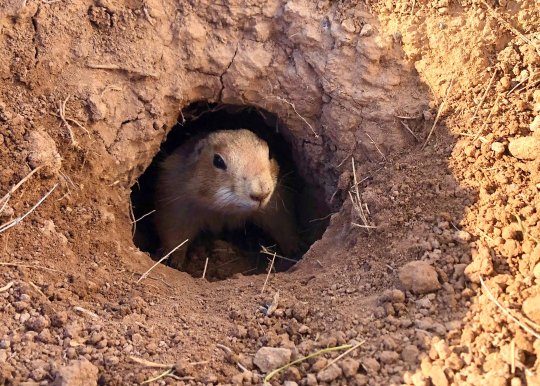
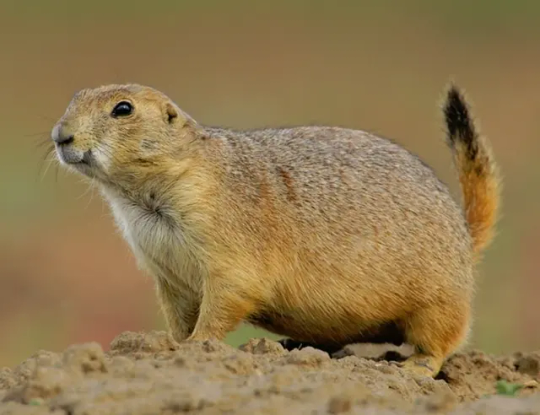
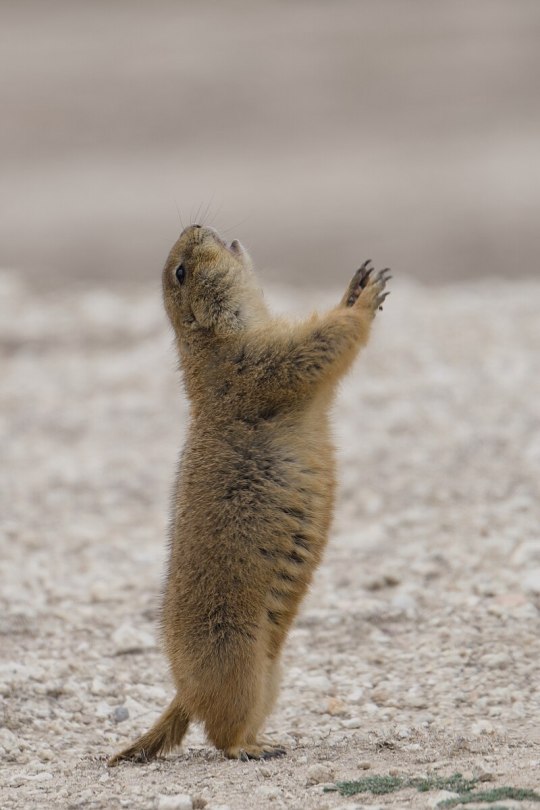
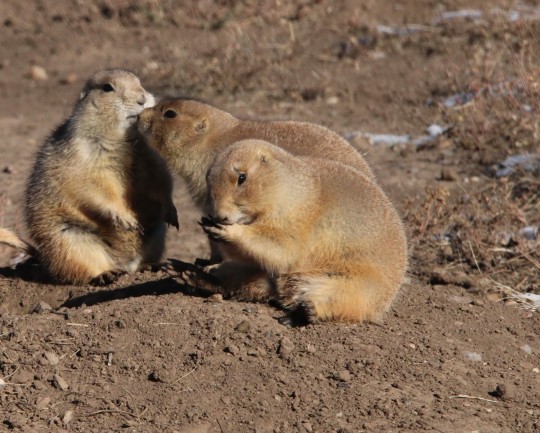


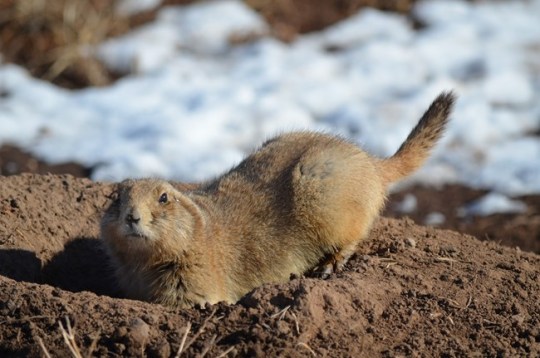

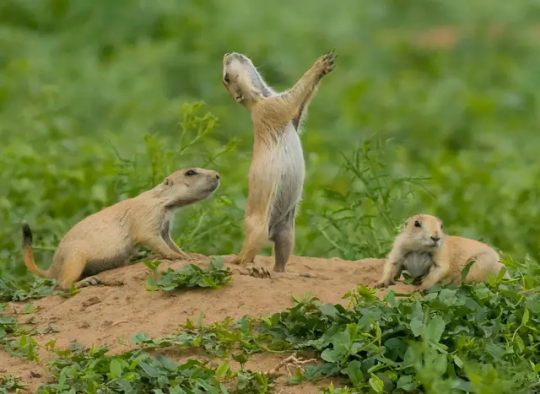
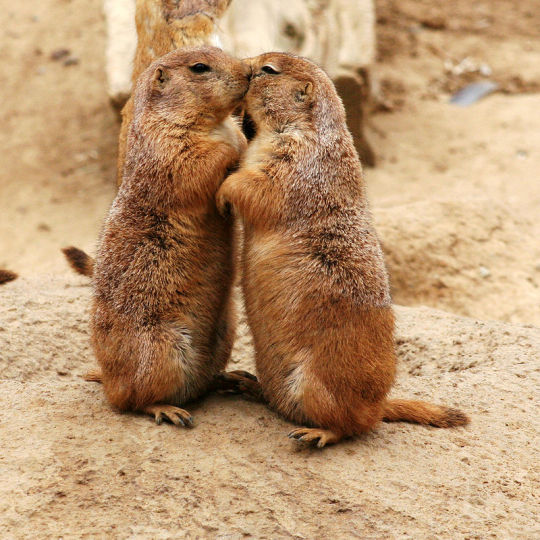
Cynomys ludovicianus, better known as the black-tailed prairie dog is a rodent of the family Sciuridae and one of five species of prairie dog ( the others being the white-tailed, Gunnison's, Utah, and Mexican prairie dogs). They are native to the Great Plains of North America found in the Great Plains of North America from southern Saskatchewan and Alberta Canada to Northern Chihuahua, Mexico and from as far east as the US state of Iowa to as far west as Arizona. Black-tailed prairie dogs are highly social animals that live in large "towns" in the wild that may contain thousands of individuals. Towns may be subdivided into two or more wards, based on topographic features, such as hills. Wards are usually subdivided into two or more coteries, which are composed of aggregates of highly territorial, harem-polygynous social groups. A coterie typically consists of a dominant male, 3-4 adult females, their young pups, and yearling juveniles. Individuals within coteries are amicable with each other and hostile towards outside individuals. These rodents are famous for creating elaborate burrow networks which serve as refuges from the external environment and are one of the most important features of their colonies. Burrows are used for breeding, rearing young, and hiding from predators, and are maintained from generation to generation, and serve as stabilizers on the physical and social aspects of the colony. A black tailed prairie dogs diet is primarily comprised of grasses, flowers, forbs, and sedges along with occasionally thistles, roots, worms, grasshoppers, bushes, and cacti particularly prickly pear. Black tailed prairie dogs get the majority of there water from there food. Black tailed prairie dogs are themselves eaten by coyotes, american badgers, bobcats, foxes, eagles, hawks, prairie rattlesnakes, and black-footed ferrets. Reaching around 17 to 21 inches (43 to 53cms) in length and 1.5 to 3lbs (0.68 to 1.36 kgs) in weight (with males being slightly larger than females), black tailed prairie dogs sport rounded heads, compact bodies, and long claws used for digging. The coat is sandy-colored fur with paler coloration on the underside, and a black tipped tail hence there common name. The breeding season occurs from late February through April, after a 33 to 38 day pregnancy a mother black tailed prairie dog will give birth to a litter of 1 to 8 pups. Pups do not open their eyes until 30 days after birth. They remain nursing underground for the first 7 weeks of their life. Pups are weaned very soon after they first emerge from the burrow and start eating grasses. Females within the group all help care for the young. Black tailed prairie dogs typically reach sexual maturity at around 12 to 15 months of age, whilst females often remain with there natal group for life males set off to start there own territory and coterie. Under ideal conditions a black tailed prairie dog may live up to 8 years.
#pleistocene pride#pliestocene pride#cenozoic#black tailed prairie dog#prairie dog#rodent#animal#facts
6 notes
·
View notes
Text
i had to write about two different opinions on the oil sands and one guy was like "well alberta has legislation to moderate the pollution and the economy relies on it, me and the government would have less money if we stopped developing them" and the other guy is like "i have spent years trying to fight them because they are polluting our native land, taking our water and killing our animals, we are suffering from rare and aggressive forms of cancer from the petroleum" and back to "other places would have more money than us"
5 notes
·
View notes
Text
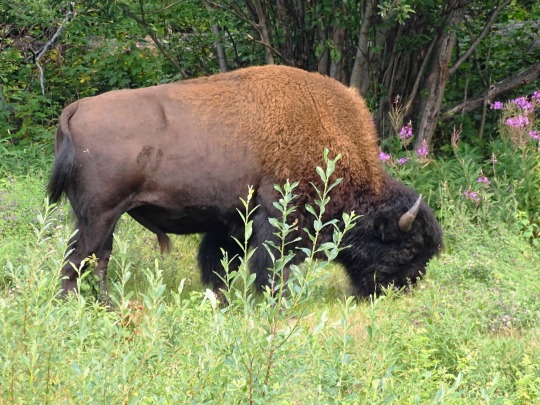


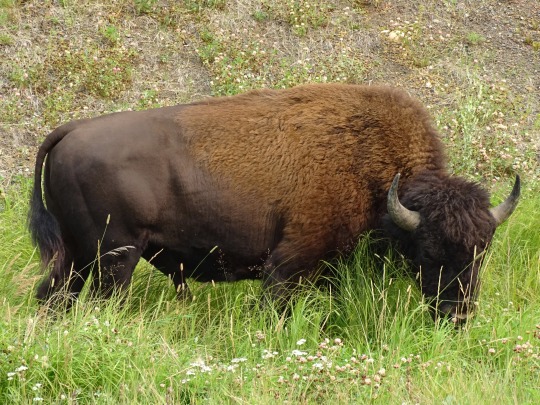


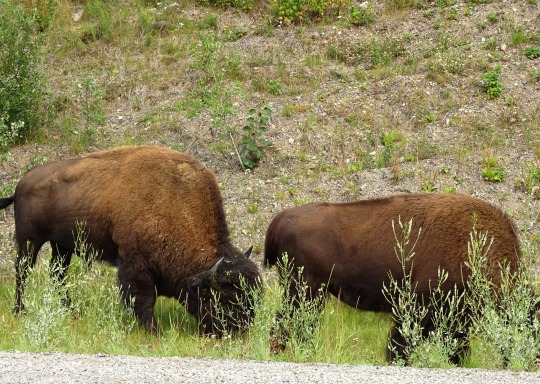

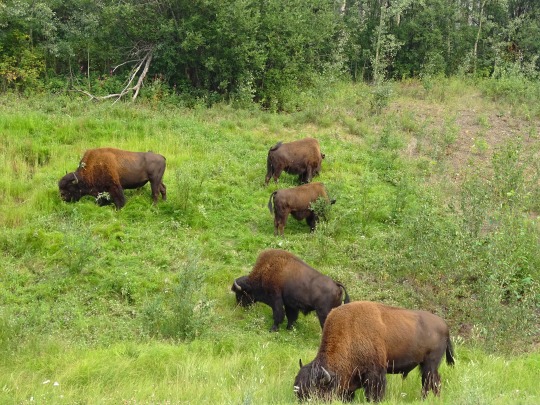
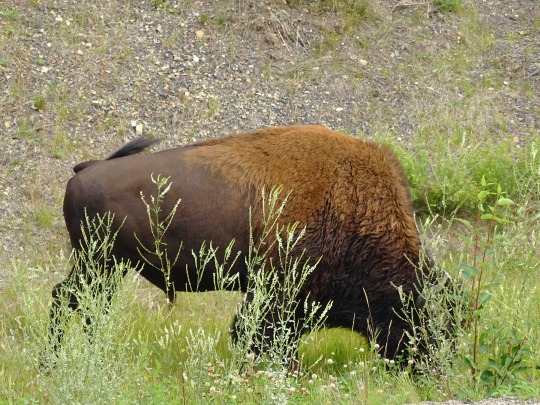
Wood Bisons, YT (No. 3)
The herd currently has a total population around 2,500, largely as a result of conservation efforts by Canadian government agencies. In 1988, the Committee on the Status of Endangered Wildlife in Canada changed the subspecies' conservation status from "endangered" to "threatened", where it remains.
On June 17, 2008, 53 wood bison were transferred from Alberta's Elk Island National Park to the Alaska Wildlife Conservation Center in Anchorage, Alaska. There they were to be held in quarantine for two years and then reintroduced to their native habitat in the Minto Flats area near Fairbanks, but this plan was placed on hold. In May 2014, the U.S. Fish and Wildlife Service published a final rule allowing the reintroduction of a "non-essential experimental" population of wood bison into three areas of Alaska. As a result, the Alaska Department of Fish and Game introduced the first herd of 100 animals to the Innoko River area in western Alaska in spring 2015.
Currently, about 7,000 wood bison remain in wildernesses within the Northwest Territories, the Yukon, British Columbia, Alberta, and Manitoba.
Source: Wikipedia
#Wood Bison#Alaska Highway#travel#original photography#vacation#landmark#landscape#countryside#summer 2023#flora#nature#Canada#Alaska-Canadian Highway#ALCAN Highway#Alaskan Highway#the North#Yukon#tourist attraction#fauna#wildlife#animal#grazing#meadow#Bison bison athabascae#mountain bison#wood buffalo#mountain buffalo#American bison#wildflower
8 notes
·
View notes
Note
i would like to speak to ❄️ anon (if they do not mind) and recommend sk8 first. I LOVE WINDBREAKER BUT SK8 IS JUST SO CUTE AND FUN AND IT HAS GREAT CHARACTERS AND A GOOD STORY. if ur like me and prefer story and the people and stuff over action id also recommend sk8 first. i am very biased towards sk8 despite loving both. both are short tho so it wont take long to watch them. i just really like sk8 (im also slightly biased bc canadian character and im from canada so i just find it extra fun to see like. humour about that. im not even that devoted to my country, i just dont often see canadian characters in media that isnt canadian unless theyre for the butt of the joke)
also miss flora, if ur reading this, i know how you said you wonder what state the guild is from but i always wonder what province/territory (and sometimes city) langa is from. like i dont think hed be from ontario, especially not toronto. i dont think hed be from a major city like vancouver. he seems to have enjoyed living in canada too much to have lived in quebec (ik ur americans so for context, quebec is the very french province. they generally hate all of canada and pretty much all of canada hate them too. except 18yr olds bc the legal drinking age there is a year younger so they have to put up w 18yr olds visiting just to get drunk.) i honestly think hed be from farther north, lots more places for him to ski. i think its be really funny if he was from one of the territories or like. alberta.
- 💄
yes thats a very good comparison of the two!!! they are both only 12 eps (if i remember wbk correctly) so not long watches at all but it just depends on if you’re preferring story or action.
and honestly i completely forgot langa was canadian LMFAO thats such a good character trait for him 😭 also i love when animes hand us a very obviously japanese native level fluent VA and are like. they’re from canada. suspension of disbelief is key
interesting take tho!! you’re right i know nothing about canada but i like your thought process!! itd be kinda sexy tho if he was from qbc and could speak french too……..
3 notes
·
View notes
Text
The prairies
the prairies have a huge image problem through no fault of their own. When talking about conservation it’s easy to sell people on preserving areas with mountains, the boreal forest, ocean, rainforests etc. But the prairies have been a tough sell. It’s not because the prairies aren’t beautiful and captivating and important. It’s because so many people don’t even know what an actual prairie is. There’s a good chance when you read prairie you pictures fields of wheat/barley/oats/canola/whatever crops are common to your area. But that’s not a prairie. A prairie is a thriving eco system with a shit ton of bio diversity. It may not look it but it has some of the most bio diversity of any land eco system. It is also one of the best eco systems for sequestering carbon. The absence of much bush should not make an eco system disposable.
This is one of my biggest issues with people advocating for less livestock production in favour of crops. Crops don’t sequester nearly as much as a native grass prairie. But a native grass prairie not only can support livestock but needs grazing animals to thrive. I know we’ve all heard about cows and emissions but what people don’t consider is the amount of emissions being sequestered by allowing these animals to graze an in tact prairie, while also allowing a bio diverse eco system to flourish. Yes there is bad cattlemen out there, just like there’s good ones who care a lot about conservation (despite your notions thay all ranchers/cowboys don’t give a shit about the land). I could continue on about this about how 99% of ranchers care a lot about the welfare of their livestock but that’s a different conversation.
my point is the preservation of prairies are not only an absolutely vital part of protecting bio diversity and in turn helping fight climate change but tue revitalization of these prairies needs to happen too. Currently only 6% of native prairie in North America is in tact (there is tame pasture and prairie which is better than crops but not as good as native plants). Some places are better than others (but nobody is great) like Alberta (26% left), Saskatchewan(21%). But some are absolutely terrible like Iowa and Texas.
prairies are not a barren wasteland waiting for humans to plant crops. They are an amazing and complex eco system just as deserving as the mountains and forests of our protection
26 notes
·
View notes
Text
a personal reflection on decolonization
riel s. | 2022
Tansii kiiya (hello, how are you?) my name is riel starr and I am a Red River Michif artist and academic. my history on his land begins thousands of years ago among the peoples of the great plains, and my written history begins in the late 1600s with my first French ancestors and their unnamed first nations wives. my first First Nations ancestor is an unnamed woman referred to in my grandmother’s family tree as “Cree Woman”. I am Red River Métis on my mother’s side. Our historic Métis family names are Berthelet, Caron, St. Germaine, Dazé, Larivière and Dubois, and we come from the communities of Point à Grouette (now called St. Agathe), St. Norbert, and St. Vital (now modern-day Winnipeg) as well as the historic Batoche, Saskatchewan. My Berthelet ancestors were notable community leaders in Pointe à Grouette and my Caron ancestors including my fifth great uncle jean caron sr. fought in the North West resistance of 1885 at the battle of Duck Lake when he was fifty-two years old. Jean Caron Sr’s house is now a historic site in Batoche. As for myself my mother is a Métis educator and academic and my father is a settler archaeologist-turned-locksmith. I introduce myself in this way, the traditional way of Métis writers to contextualize my family, my knowledge and experiences, as well as my place on this land.
Natually, my native mother and my settler archaeologist father never married and split before I was old enough to form any memories. Museums and history have always been a fascination to me; the Royal Terrell Museum in Drumheller, which I dubbed “the dead dinosaur museum” and the Royal Alberta Museum which I called “the dead mouse museum” after my favourite display. The display was a larger-than-life diorama of a mouse, it’s intestines showing, the organisms that helped decompose the corpse were also displayed, massive daddy long legs, gigantic ants, worms thicker than my arm. The RAM is an interesting place. A few years ago, it was moved into a new building downtown and I could no longer spend hours finding fossils in the limestone exterior of the original museum. The place had changed drastically. As I reminisce on what I loved about the RAM I realize that all the things I disliked were their representations of Indigenous people; the uncanny wax figures with placid skin that did not resemble a single Native person’s skin that I had met. and the artwork they portrayed as artifacts. What makes a beaded bag so different from a Van Dyck if they’re the same age? And honoured the same amount by the people who made them?
Another place of importance growing up was Fort Edmonton Park. Like Heritage Park, Fort Edmonton has costumed interpreters, who teach visitors history as if the interpreters were of that time. In the summer of 2017, my lifelong dream came true, and I became a volunteer costumed interpreter with my mentor Sheldon Stockdale, another Métis person, and we were able to teach our history in the way we felt was right, something deeply important to the Métis people. An experience we had that stands out vividly is working on Fort Edmonton’s 1920 Street, and educating visitors on the history of pemmican, a sort of ancient protein bar made from berries, dried meat, and animal fat. Pemmican was a staple of survival for the Métis, and we were asking visitors to help us in redesigning the packaging for the bar. The historic package had a representation of an Indigenous person on it, a caricature of a race. We asked visitors if turning Indigenous people into mascots should be accepted, and sadly many people didn’t see the problem. Sheldon and I borderline argued with a man who seemed to see no problem in reducing us, the people speaking to him, to caricatures. In a similar vein, someone once gave me Chicago Blackhawk’s stickers when i was six, and not knowing a thing about hockey I asked my mother who the stickers were of. I’m guessing my mother did not want to explain the history of colonization and caricatures of Indigenous people, so she dismissed my question by telling me that the man in the tacky illustration was my ancestor.
Decolonizing art history seems like an impossible task, and perhaps it is. You cannot separate someone like Emily Carr from art history in Canada, however you can change the way you teach her work. Perhaps decolonizing art history means recognizing the ways in which “art history” as a field of study is deeply Euro-centric, and how the way of teaching this history is the same. I took my first semester at AUArts in the fall of 2020 after transferring from MacEwan after completing a two-year diploma at MacEwan University. I had a sculpture class a media arts class an art history class. The more I consider how to decolonize our history the more I understand that it is not the history that can be decolonized, it is the way we are teaching said history. It is the way that so much of our education is taught to us through a colonial lens, rather than a multifaceted history with a multitude of perspectives and peoples contributing until an entire picture is formed.
In the fall of 2020 in my media arts class my professor Kurtis Lesick was discussing an artist, a black artist who had him and others participate in a performance in which in that space the black artist allowed the participants to say the N-word. Rather than describing the piece in the way I just did removing the slur, Kurtis Lesick made the conscious decision to say the N- word twice. A person I had once thought to be an ally of mine, who knew the language of decolonization. Earlier this year a classmate in this class who was also in my sculpture class in the winter of 2022 told me that ‘knowing me has made her a better person’, this woman does not know me, and I do not know her, but I knew her in that moment. I knew that she wanted me to absolve her of her settler guilt. White settlers love referencing Tuck and Yang’s Decolonization Is Not a Metaphor but sometimes I wonder if they truly understand that it is simply not enough to know the language of decolonization, that you must be actively anti-colonial in a field that is built on colonization.
I spent a lot of time at Fort Calgary this semester for my FINA class, critiquing their exhibitions wondering how they can be improved if they can be improved, and I learned that given their budget that it is not possible. Fort Calgary, like other institutions cannot afford to replace their current exhibits and entirely redesign the way they teach history. What they can do is acknowledge the missing pieces, they can acknowledge the gaps they can acknowledge the fact that there’s more than one canon of history. Sometimes I wonder if the mosaic of history is too complex to decolonize; knowing that we will never return to a world like the one that existed pre-colonization. I think about my one classmate who tokenizes me, who knows how to use decolonial language to appear one way, but who never puts those concepts into practice. I think about the settlers who think that decolonization is re-colonizing the Americas but with “the Indians” in charge this time.
I now understand that decolonizing art history cannot happen without first decolonizing institutions. I have learned that we cannot forget that we once taught art history in an i way we cannot forget the way colonization has infiltrated every aspect of the education system down to the teaching styles of each professor. if we forget how colonial art history is in the first place, we will forget why we need to decolonize. Considering the hand that art history is hard in colonization around the world, I consider about the way southeast Asian women’s bodies are talked about in my textbooks versus European odalisque paintings. Brown people’s bodies were inherently sexualized and seen as dirty, while white people’s bodies were adored and deemed Classical.
Maybe colonization is another movement in the worldwide canon of art history. Another period in the bar graph of history- as google images seems to see art history. Perhaps Emily Carr and Paul Gauguin are the faces of this genre. Just as colonization cannot be forgotten among its victims, it cannot be forgotten by its perpetrators, who still believe they are a superior culture and race. Genres of literature such as post-colonial writing from India and Sri Lanka may suggest, there was a period of colonial art and literature, perhaps it is ongoing, possibly dying out, maybe here to stay. There will always be an antithesis, an attempt to view art and art history from a different perspective, and that is how we can decolonize art history.
#i posted this on my artist page but i only use it for professional reasons and i don't wanna share it here unless you're a mutual lolol#riel text#my writing#academia#institutional critique#art writing#decolonization#indigenous#métis#michif#indigenous art#first nations art#FNMI art#art#alberta#calgary#post colonialism#colonialism#canada#land back
7 notes
·
View notes
Text
Wildlife Park Discovery Visit what are you Looking at https://www.youtube.com/channel/UC2CTKYfJcy27bFMSRrmed9Q
Wildlife Park Discovery Visit what are you Looking at https://www.youtube.com/channel/UC2CTKYfJcy27bFMSRrmed9Q https://ift.tt/5gFRp20 Wildlife Park Discovery Visit what are you looking at. Renowned for its commitment to conservation and education, this park offers an experience for nature enthusiasts of all ages. Whether you are seeking an up-close encounter with magnificent creatures or simply craving a serene escape into the wild, Discovery Wildlife Park has it all. From awe-inspiring predators like bears and wolves, to graceful herbivores such as elk and deer, each resident at Discovery Wildlife Park has a captivating story to tell. Here, you can observe these extraordinary animals in spacious and natural habitats, mimicking their native environments as closely as possible. The dedicated team of experts and caretakers ensures that every animal living within the park receives the highest standards of care. Please visit my website to get more information: https://ift.tt/RqaSlA5 Subscribe now and stay connected for exciting vlogs on local events, trade shows, daily life adventures, and outdoor nature hikes! https://www.youtube.com/@KassDays/featured?sub_confirmation=1 Important Links to Follow Support My Channel Patreon:https://ift.tt/p2cdhgU Google Blog https://ift.tt/8BMpand Stay Connected With Me. Facebook: https://ift.tt/VGCkRbA Instagram: https://ift.tt/z1C7Itg Tiktok: https://ift.tt/pbsFSAW Twitter (X): https://twitter.com/KassDays Website: https://ift.tt/RqaSlA5 For Business Inquiries: [email protected] Leave me a call at 403-813-4468 ============================= Recommended Playlists Daily Life – Day to Day Adventures with KassDays How-To Videos: Unlock Your Learning Potential WATCH MY OTHER VIDEOS: Car Camping Setup How Fast Can You Do This? Ghost Towns of Alberta Discover Adventures Travel Vlogs with KassDays Horse Jumping Spruce Meadows ============================= About KassDays. Welcome to KassDays Calgary, Alberta, Vlogger that means Canada. I aim to show you weekly videos of what is going on in my life. I’ll be out and about at local events like car shows, trade shows, and a how-to here or there. I’m also going to be hiking, sightseeing, and more. These are my personal experiences, from ordinary everyday tasks to the not-so-ordinary. The content will vary; I hope you like variety. If there’s a good event coming up and I know about it, I will do my best to capture it so I can share it with you. I would be thrilled if you chose to join me on this journey. For Collaboration and Business inquiries, please use the contact information below: Email: [email protected] Subscribe now and stay connected for exciting vlogs on local events, trade shows, daily life adventures, and outdoor nature hikes! https://www.youtube.com/@KassDays/featured?sub_confirmation=1 ================================= #discoverywildlifepark #wildlife #park #nature #animals Disclaimer: I do not accept any liability for any loss or damage incurred from you acting or not acting as a result of watching any of my publications. You acknowledge that you use the information I provide at your own risk. Do your research. Copyright Notice: This video and my YouTube channel contain dialogue, music, and images that are the property of KassDays. You are authorized to share the video link and channel and embed this video in your website or others as long as a link back to my YouTube channel is provided. © KassDays from KassDays https://www.youtube.com/watch?v=idd1VrFRI1Y via KassDays https://ift.tt/eXhnIRa January 16, 2025 at 06:00AM
0 notes
Text
Deathbypunches is now a botanical blog
The challenge of invasive plants is difficult to overstate in the 21st century. The native plant communities are in peril, and the selective forces have been modified beyond the scope of these communities ability to respond. Further - plants create their own chemical environments and microclimates through their growth habit, and create an ecosystem of animals around them. When an invasive plant is in a habitat, it changes the course of succession, modifies opportunities, or outright removes opportunities. The context that a native plant evolved in may no longer exist. Early successional plants are adapted to bare mineral soil in full sun (usually). When the soil is disturbed by tilling or bulldozing, they get in! Henbane, kochia, lamb's quarters, etc. Invasive perennials often are adapted to being mowed or grazed and survive with a perennial rootstock. Thistles, dandelion, alfalfa. They usually have to be able to compete with grasses. Mowing is an interesting selective pressure because the only constraint is the plant's ability to recover from it - thorns, taste, and poison are irrelevant. In Southern Alberta at least, many of the native prairie plants do not grow very tall and the short grass habitat is easily replaced by larger fast growing alien species that have no predators. When the grassland is tall, short growing plants can have a difficult time getting established even if soil conditions are right. The question remains: "What then shall we do?" Changing our attitude towards land management and plants in general would help a lot. Avoid disturbing the communities- bulldozing, mowing, excluding browsers or predators, pesticides, herbicides. All of these pressures can select for invasive plants that specifically follow human disturbances around because they have adapted to such pressures. Human disturbance often specifically removes the plants that compete with invasive species. Education would be a good start. Most people couldn't even name 5 native prairie flowers. Valuing native prairie habitat would be incredible- but half the time, the person in the boardroom has no context of the value of the plant community they are approving destroying. There is a decent chance they have never been to the site! So long as the economic system is only able to value short term increases in CURRENCY, the pressure to develop will always win. So long as the attitude is one of domination and control, there will be no harmony with nature.
0 notes
Text
The Benefits of Learning Defensive Driving Techniques.
As we know in this era driving is very common for everyone even teenagers also do drive without having a driving license. Some teenagers also do drink and drive and due to this thing in this era, the accident rate is increasing day by day which is not good. Parents are also not stopping their children from driving, by this thing they are not putting their lives in risk they are putting other people’s lives at risk also on the road. In this I want to tell you that as I already said you in driving there is to much risk in driving. So, in this, we will tell you some benefits of learning defensive driving techniques.

Well, there are several benefits of it like,
Active Driving.
In this, I want to tell you that as we know how it is important to be active while driving otherwise by this this thing it will cause accidents.
Awareness of Your Surroundings.
In this, I want to tell you that as we know how important it is to look at each and everything. As we know while driving on the road there are different type of boards are available and, on those boards, different types of signs are made make sure you see them very carefully While you’re on the road, make sure to keep your eyes peeled. As we know that while driving you have to see all sides you cant focus on one side you have to look at all direction.
The traffic in front of you
The road ahead of you
The traffic behind you
And the roads on either side of yours may have vehicles approaching from those directions.
Improves your driving skills.
in this i want to tell you that if you follow each and every rule properly then your driving skill will also get improved. You get a greater understanding of the rules of the road, and you will know how to drive in a safe manner.
Accident-free techniques.
well as we know that while driving on highway or it is night drving some of person get scare they get panic at some time . The key to a good defensive driving strategy is knowing how to avoid unprepared crashes and recognize potential dangers before it is too late.
Proper Spacing
Proper spacing is the most important defensive driving technique. You should never be too close to the car ahead of you and always have enough space between your vehicle and any other cars on the road.
The recommended safe following distance varies based on traffic conditions, but 15 seconds behind a slower driver (or 10-12 seconds if it’s raining) is a good guideline for beginners.
Anticipating Hazards.
Animals on the road. If a deer steps into the middle of your lane, it can cause an accident that results in serious injury or death. Also, watch for squirrels and other small animals that hide under bridges and overpasses because they’re used to being hunted by motor vehicles on their native land.
These paths are often too narrow for cars to pass safely with pedestrian’s present—so anticipate them before they become a risk.
Defensive Driving Training gives confidence.
As I have already told you that driving is not safe in this different type of difficulty comes but if you are a professional driver training in alberta then in training you have already done defensive training, they trained you for this. So that while having any type of difficulty you will not face any of these problems.
Observe & Pay attention to the surroundings
Predict & evaluate situations before they happen.
Evaluate the situation before taking actions
React to the situation at hand by taking appropriate actions to avoid collisions or accidents
Evaluate the results of the driving and take action to improve.
Defensive Driving helps to reduce traffic violations.
As we know that in this era, there are various defensive driving course which you can use it and by this you can reduce the chances of doing traffic violation while also avoiding fine and penalties as well. in this i also want to tell you that driver should know each and everthing about rules and regulation, driving safety, roads rules like speed limit to avoid accident.
0 notes
Link
0 notes
Text
East Alberta: Elk Island and Drumheller
Before heading back to the Prairies, there were two more things I was excited about to explore in Alberta; Elk Island national park and Drumheller.
Elk Island was the first location where bison were reintroduced in Canada (after they had all been killed to force natives to live on reserves 😵); 20-30 animals that were brought from Montana where farmers had kept the last bison alive to prevent them going extinct... since then, the herd at Elk Island has grown so successfully that they've been translocated to other parks like Grasslands & Waterton where I've seen the majestic animals 🤗! Grasslands' herd is also a "bison exporter" to amongst others Indigenous communities so that they can rebuild their cultural ties to the animal, hence this is really a very successful conservation story! 🤩 Elk Island being the place where it all started, I had been excited to see bison here but no luck; on a 30-degree day they were hiding in the forest, I would too!

The lake stank of algae so I ended up going for a small hike, which according to the description would pass by some beaver dams & have a bit of steep terrain to a view of the rolling hills... I'm quite certain that I did do that hike, but I didn't encounter any of those 🥴 😅 and instead had a flat trail without any notable viewpoint nor dams... not sure where the disconnect was but disappointed by the park - probably it's more interesting in fall.
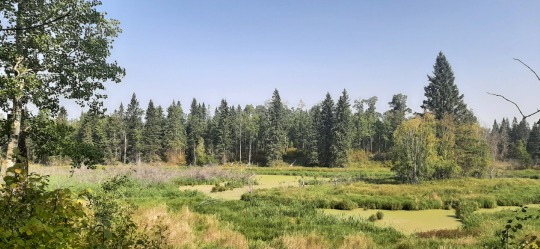
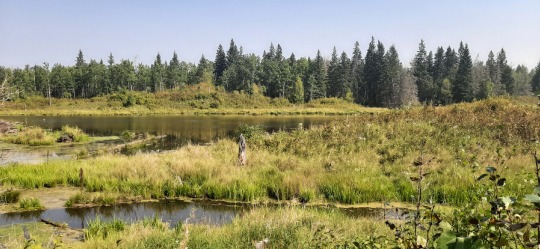
This meant that I had plenty of time to drive down to Drumheller where the famous Tyrrell Museum of Palaeontology is located... I had initially thought of skipping it but as I now have spare time after cutting my BC travels short, I thought why not!
This drive was probably the straightest route I've ever driven.... apart from a few bends it was dead straight for kilometers on end, making it difficult to stay focused! I did have a true Canadian train passing by, where 200 wagons later you're finally allowed to cross the tracks. 😝 About 20 km north of Drumheller, the scenery changed abruptly from rolling green hills to yellow flat grasslands (including the return of nodding oil donkeys), until I drove down into the river valley and the badlands appeared.

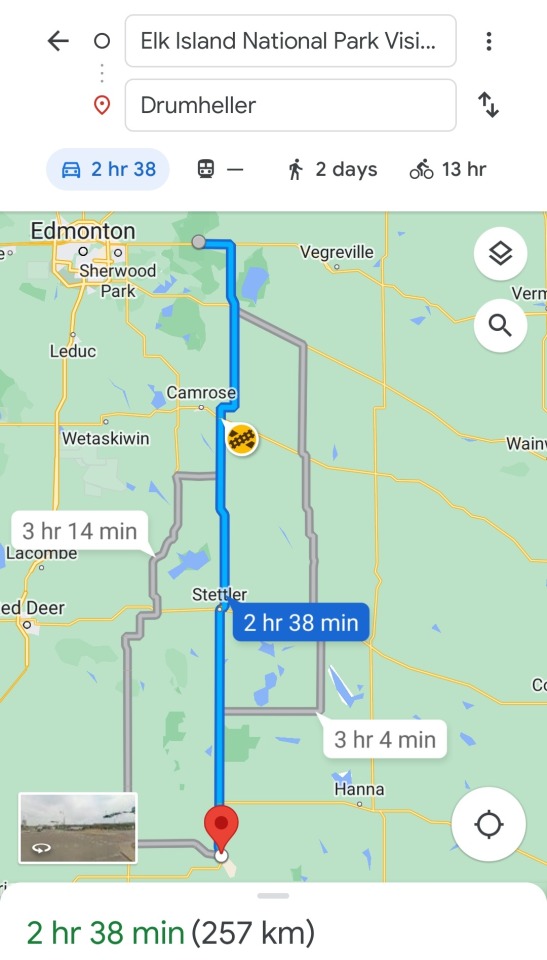
First thing I saw when driving into town was the largest T Rex in the world together with his smaller child/cousin/other dino?? (I'm not really versed in the world of dinosaurs 😅) so couldn't avoid taking a selfie for my nephews whose world revolves around the creatures 😍.
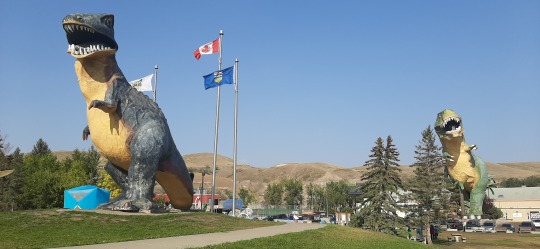

Check-in at the airbnb was a breeze so showed up at the museum at 6.30pm which was perfect as the masses started to leave. I must say that I was at first a bit apprehensive about visiting, as I'm not that much into dinos but I was truly blown away!! 🤩 Yes, they feature extensively but the fossils that are displayed are extraordinary, and beyond that, the exhibit explains the story of evolution and life on earth in an easy-to-understand & attractive way, a great recap of my ecology course! In 2 hours, I probably skipped a third, not because it wasn't interesting but because I was really getting hungry. 🙃 Below are just a few impressions, this one got added to my favourites of this trip! 😍
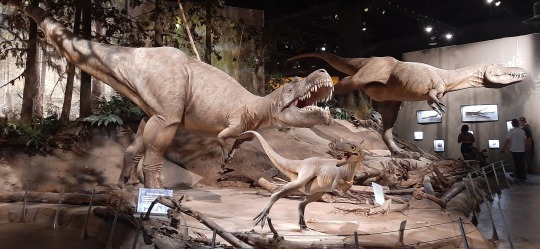

Outside, the sun was setting over the badlands so they would have to wait until the next day... first order of business was to get some chips, veggies & dips and sit on the microbrewery's patio embracing the desert-like evening heat 😊... which I would hate a few hours later in a stuffed room where the airco was too loud to run. 😒
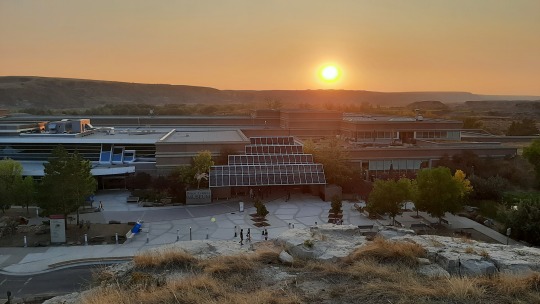
In the morning, it was decidedly cooler and cloudy, which was a welcome change after the last few hot days! Just south of the village, there's some imposing hoodoos that are still standing (despite children running & climbing everywhere 😮). After that it was one more look at the badlands (which is not my favourite landform, but prettier in contrast with the valley's green) and a derelict grain elevator, before driving east out of Alberta.
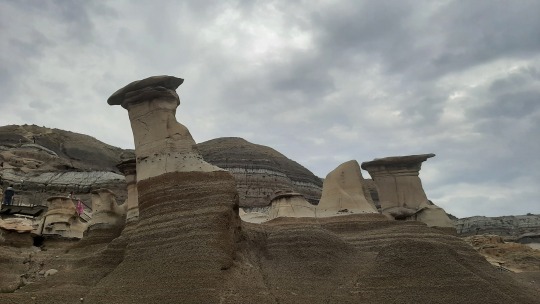

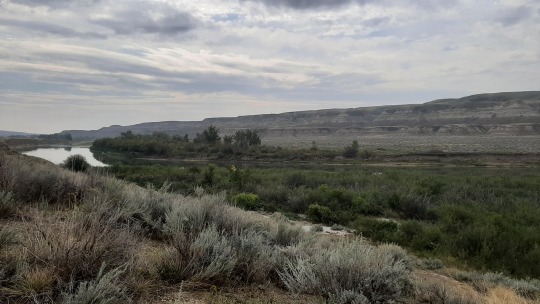

Wildlife: 1 gopher at Drumheller
SUPs: none
Hikes: one at Elk Island
1 note
·
View note